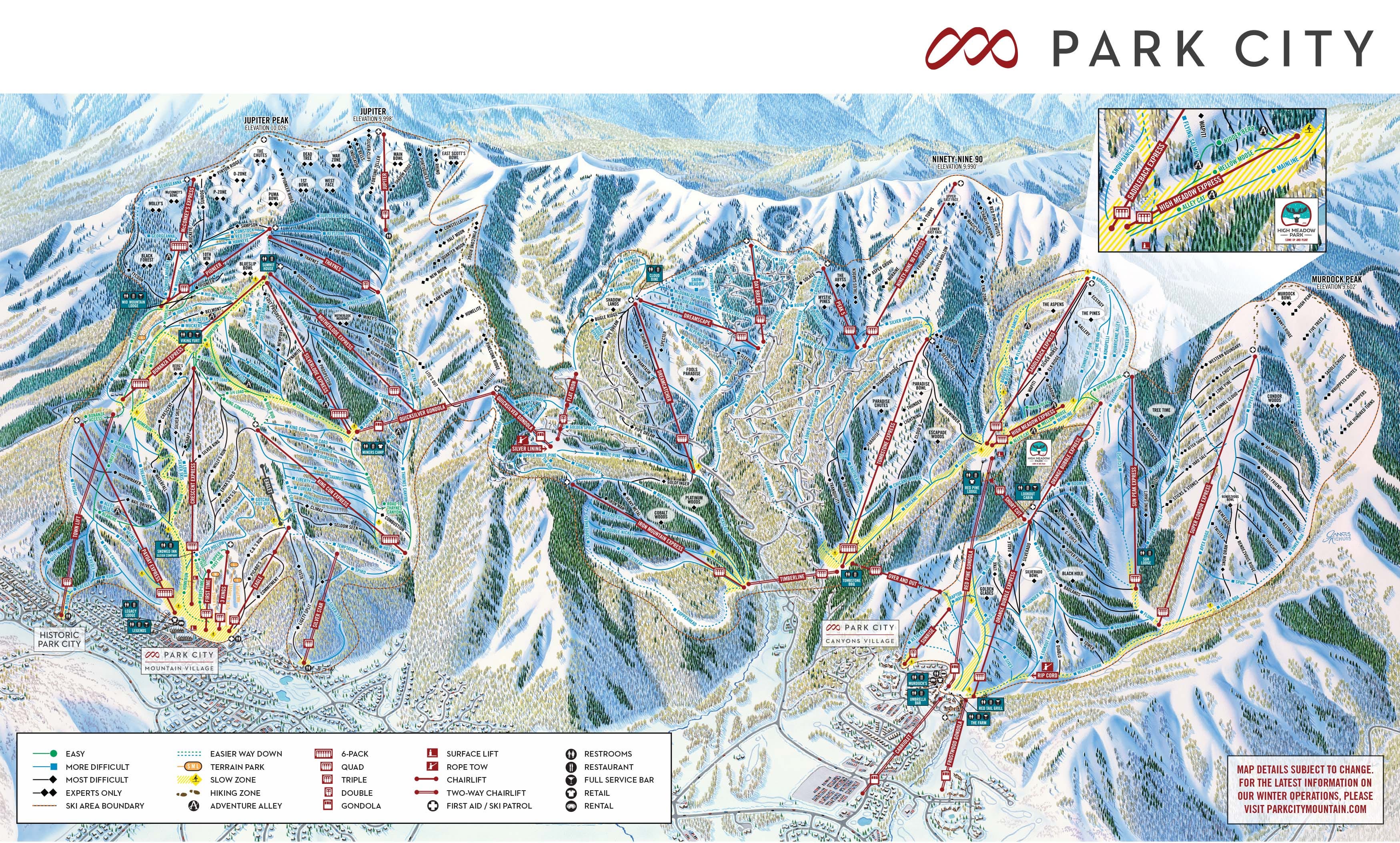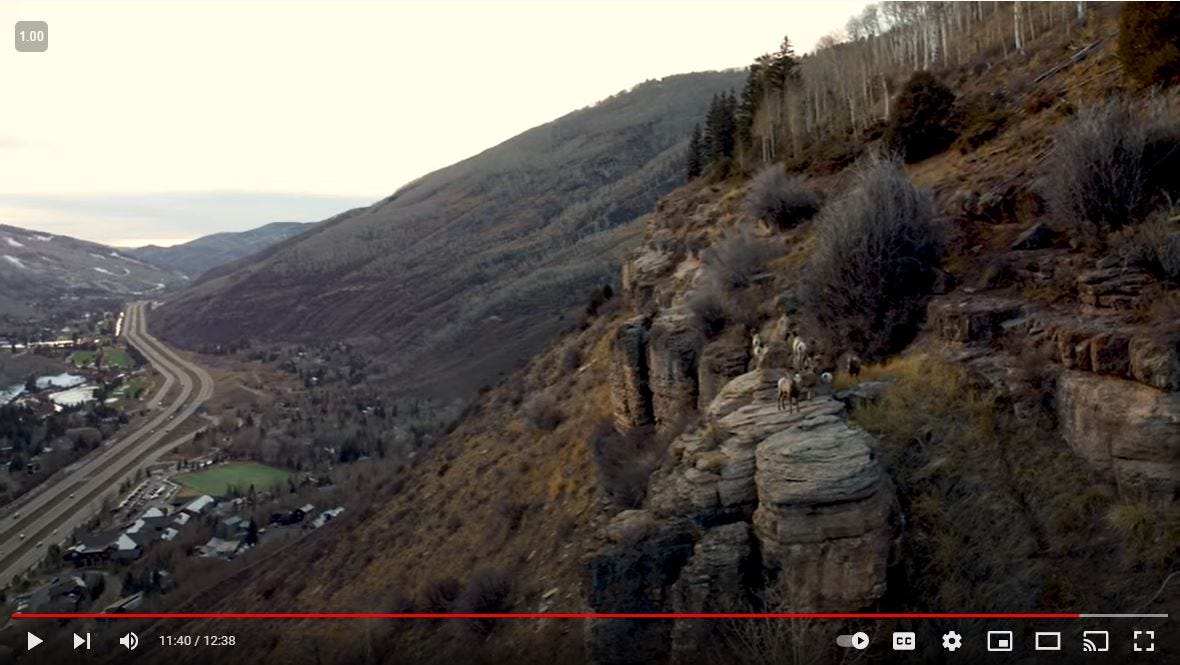Vail Resorts Faces Second Locals’ Revolt in 2 Months as Appeal Shuts Down Park City Lift Projects
Loss follows employee housing defeat in Vail
It’s like they’re sitting around with voodoo dolls just thinking up people to curse
Almost anywhere else, it may have truly mattered. A six-pack to replace a pair of old triples and an eight-pack to knock out the old sixer. It sounds audacious, excessive, an incomprehensible outlay of cash - $30 million, perhaps? – for lift replacements. Upgrades. Not a single new trail. Just smoothing out some pinch points. Up and out of the base at Eagle. Up and out of the Canyons connection at Silverlode. Just keep ‘em moving. The skiers. Liftlines are the enemy. Everyone hates us for it and social media loves to hate. Let’s bring back the thumbs-up selfies and the Experience of a Lifetime. Before everyone realizes they could be having more fun up in the Cottonwoods. Just two lift replacements. Anywhere else, that may have been a lot, but in Park City it would be like adding another tree to the forest. Who could possibly notice or care?
Two lifts in a town with 62 of them. Because right next door to Park City ski area (and also in Park City proper) is this:
And here they are side by side, more or less where the two ski areas meet (which is off Empire Peak, though there is no official connection between the resorts), their vastness apparent:
Almost anywhere else, two lift replacements – with a total of two additional seats – may have mattered. Here it could not possibly.
The Park City Planning Commission granted an appeal of a previous decision to approve two Park City Mountain (PCM) lift upgrades in a 3-1 vote on Wednesday night, effectively blocking the projects until 2023.
The upgrades were appealed on the basis that the proposed eight-place and six-place chairs were not consistent with the 1998 development agreement that governs the resort. The planning commission also cited the need for a more thorough review of the resort’s comfortable carrying capacity calculations and parking mitigation plan, finding PCM’s proposed paid parking plan at the Mountain Village insufficient.
And so, for the second time in two months, locals shut down millions in investment at a Vail Resorts flagship. Last month, the Town of Vail backtracked on a pre-approved agreement that would have allowed the company to build a 165-unit affordable employee housing project on land that Vail Resorts owned. In a 4-3 vote, the town council authorized themselves to seize the 23-acre parcel – of which Vail planned to develop just six acres – so that they could become the Great Rocky Mountain Sheep Defenders. The town sponsored this video, in which they extoll the virtues of the four dozen or so local bighorn sheep that they have spent decades pushing up the mountainside to make way for rampant mansion development:
The views in the last few frames are especially hilarious: the noble bighorns, perched gracefully on the East Vail outcroppings, with Interstate 70, buffeted by mansions and other U.S. American crapsprawl, drilling endlessly to the horizon.
Perhaps the Great Rocky Mountain Sheep Defenders are concerned that the new employee housing development would block the animals’ view of that natural marvel of an interstate.
Anyway, here we are. Vail has conceded that it will not be able to complete the Park City lifts by this coming ski season, as planned (the company had fortunately not begun demolition of the existing Eagle and Silverlode lifts, though Eaglet was removed last year). It is also unlikely that the East Vail employee housing project will be complete by 2023. In both cases, the reasoning sounds, and is, absurd. I don’t believe that the town of Vail suddenly cares about bighorn sheep anymore than I believe the town of Park City suddenly cares about chairlifts. Both shutdowns seem driven by passion over reason, spite over cooperation. As Jason Blevins writes in The Colorado Sun:
Vail Resorts’ issues have spilled from crowding at under-staffed resorts into conflicts with communities where it operates. Which has happened before but not to this scale. Park City locals in 2016 forced Vail Resorts to abandon its plan to trademark “Park City.”
The company spent years battling with unionized Park City patrollers over pay and benefits. A petition at the company’s Stevens Pass ski area in Washington last year ballooned with more than 44,000 signatures by skiers urging the operator to open more terrain.
The Park City protest of Vail Resorts’ lift expansion plans was an opportunity for community members to get involved in how the company is growing, said Angela Moschetta, who is among the Park City residents who formally appealed the planning staff approval of the lift upgrades.
“What this comes down to is managing growth,” Moschetta said. “In Park City and in too many other communities, Vail Resorts has benefited from completely unchecked growth.”
That growing disconnect between resort operators and local communities is widespread, but especially for Vail Resorts. The company has admitted some missteps with its employees in recent seasons and a $175 million pay increase announced earlier this year is meant to repair that connection. Now the company will need to repair relationships with locals who feel like they are living in the company’s Epic Pass parking lots.
This will be the narrative for the company moving forward as it sells even more season passes. (Sales for next season are pacing 9% ahead of last year.) Watch for how Vail Resorts balances its bragging to investors — Billions in cash! Most passes ever sold! Record revenues! — with its conversations in local communities, where relationships are growing more antagonistic.
Moschetta said locals cannot believe the operator when it reports a 12% increase in annual visitation but that peak days have not set records at its ski areas.
“We all can look and see with our own eyes that things look different and feel different. There are more lines, more cars, more crowding everywhere on and off the mountain. But without Vail showing us their numbers, we can’t prove it,” Moschetta said. “If we want to participate in how we manage crowding in our community, we need to see more information and Vail will have to share more with us.”
Indeed, Park City did not, by many accounts, function well by historical standards this past season. Grooming and terrain and lift openings lagged, sources told me repeatedly. But shutting down tens of millions of dollars worth of lift projects in protest is an idiotic and self-destructive act of protest that ignores several steps Vail has already taken to head off a repeat of the Very Bad Season:
The $175 million investment in employees that Blevins mentions above, which includes a $20 an hour minimum wage and should forestall the staffing challenges that led to those idled lifts and ungroomed runs.
A paid parking plan that should help mitigate peak-day traffic – just as similar plans have done at non-Vail-owned Alta and Solitude.
A 441-bed employee affordable housing development at Canyons Village. “None of them will need a car,” Vail Rocky Mountain Region COO Bill Rock told me on The Storm Skiing Podcast last week, noting that the bus and the cabriolet were right there.
Two new chairlifts that oh yeah nevermind…
The responses in both Vail and Park City are short-sighted and counter-productive. Both groups talk vaguely of grievances but offer no better ideas. Growth and change in a mountain town are inevitable. Fighting solutions without compromise typically just exasperates problems of cost and character that opponents pretend to care about. Less housing equals higher prices. The housing that’s built simply gets pushed farther out, exasperating traffic and propagating U.S. American sprawl. It’s an ugly, frustrating cycle.
Still, Vail should resist the urge to call in the battering rams and cave down the doors. Clearly, enough locals are pissed that they have a quorum. Given that this sort of stalling tactic can easily be templatized and deployed to any community where a few people with nothing better to do can shut down enormous projects, Vail needs to figure out how to appease them. It may not actually take a lot, and, considering what a small percentage of Epic Pass holders are locals, and how much damage they can do, the company ought to consider some version of the following:
Make locals special. There are many ways to do this. The easiest is to re-introduce a reservation system for peak periods, and allow Epic Pass holders to designate a home mountain where they are exempt from the reservation requirement. Paid parking plans should also come with some kind of local’s exemption or designated lots.
Commit to operations excellence. There is nothing more frustrating, as a skier, than waiting in a liftline and looking at closed terrain that’s a field of endless white. Vail must commit to opening every lift on every mountain during peak periods (so long as the snow exists to do so). They should also put some sort of minimal grooming standard in place. Snowmaking needs to begin the second temperatures allow. This philosophy of terrain maximalization ought to eliminate the majority of their lift and terrain issues.
Commit to operating at a certain percentage of the comfortable carrying capacity. Because of this debate over Park City’s lifts, I now know that the resort’s comfortable carrying capacity (CCC) is 12,570 skiers. But this is a number that is generally tough to find. Just as Vail publishes the vertical drop and skiable acreage of all its ski areas, the company ought to publish the CCC for all of its ski areas – and promise to never exceed 90 percent of that number on a given day. Or whatever. They can figure out the math. This is what Arapahoe Basin did – they figured out their CCC and tweaked the experience so that they typically stayed below that number – even as revenue skyrocketed, skier visits dropped, and season passes and lift tickets remained affordable. It all seems counter-intuitive, but A-Basin COO Alan Henceroth spelled the whole thing out for me on the podcast a couple months back.
Vail doesn’t get everything right. Last season, they got plenty wrong. But the sort of bad-faith stall tactics going on in Park City and Vail right now are not proving any kind of point. Spite is not a negotiating tactic. It’s a path taken by the lazy and the faithless and the mean-hearted and the small-minded. Spite is bad for the one and it’s bad for the many. If you don’t like what Vail’s doing, fine. But come up with something better than “no.”






